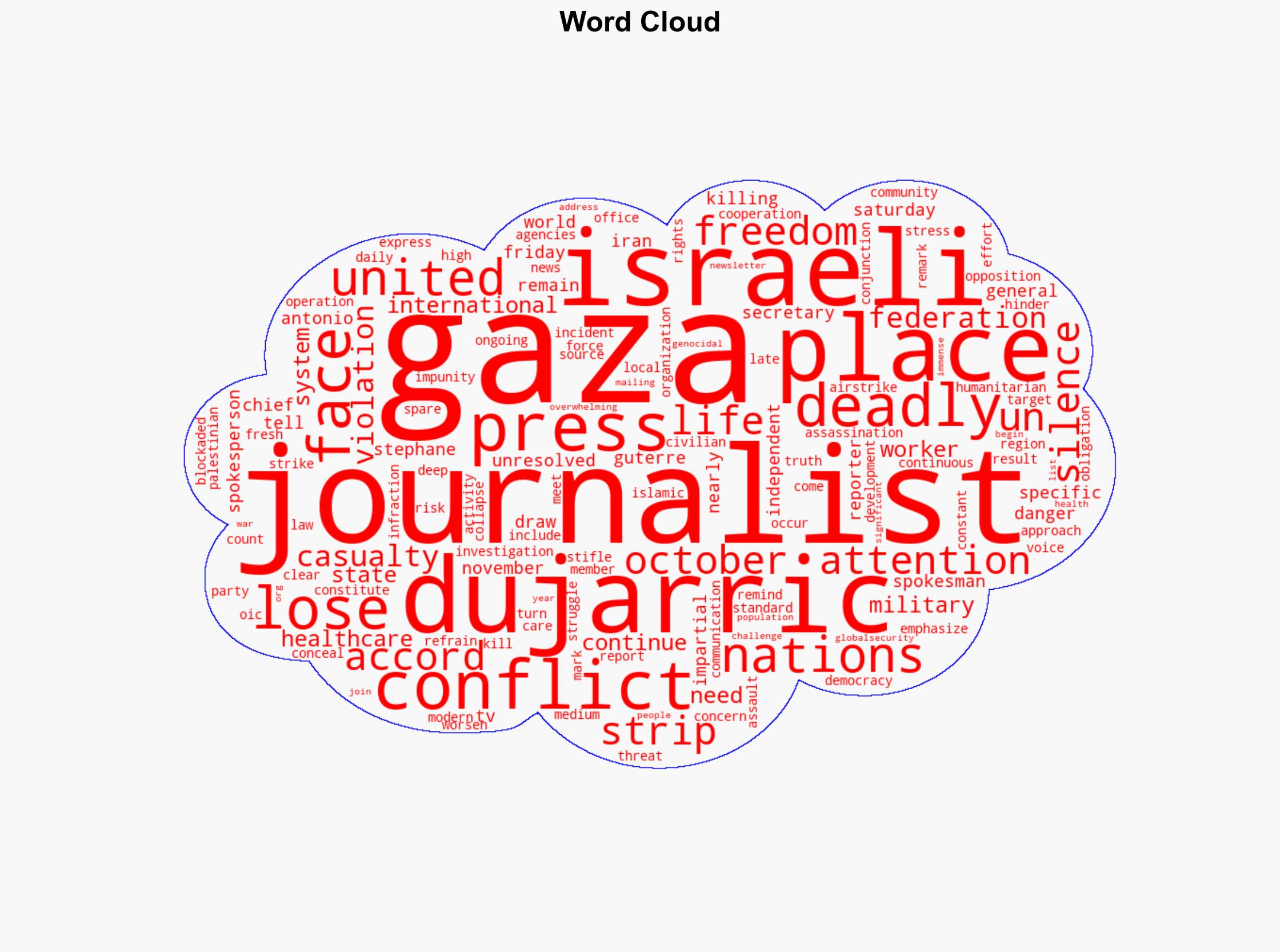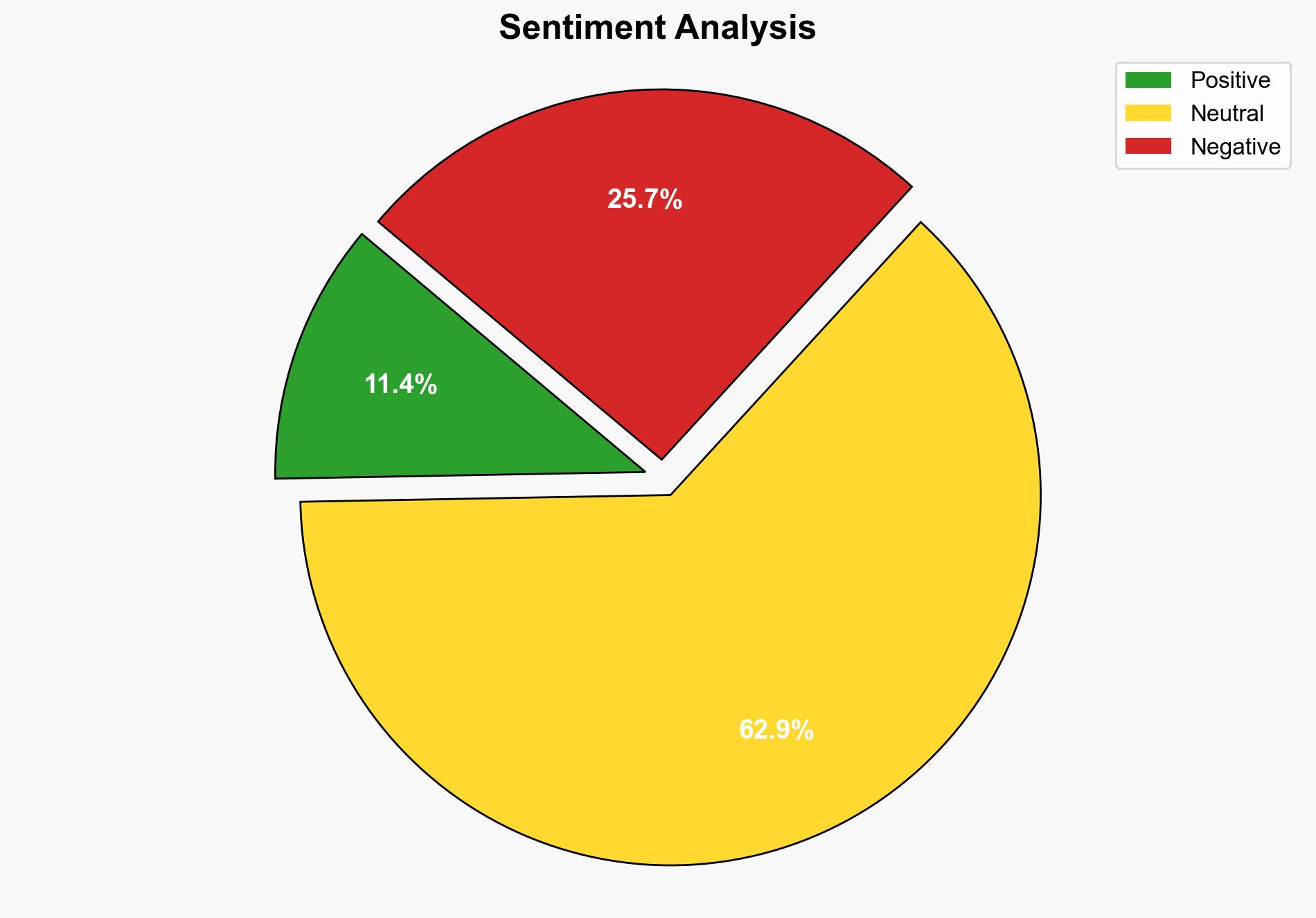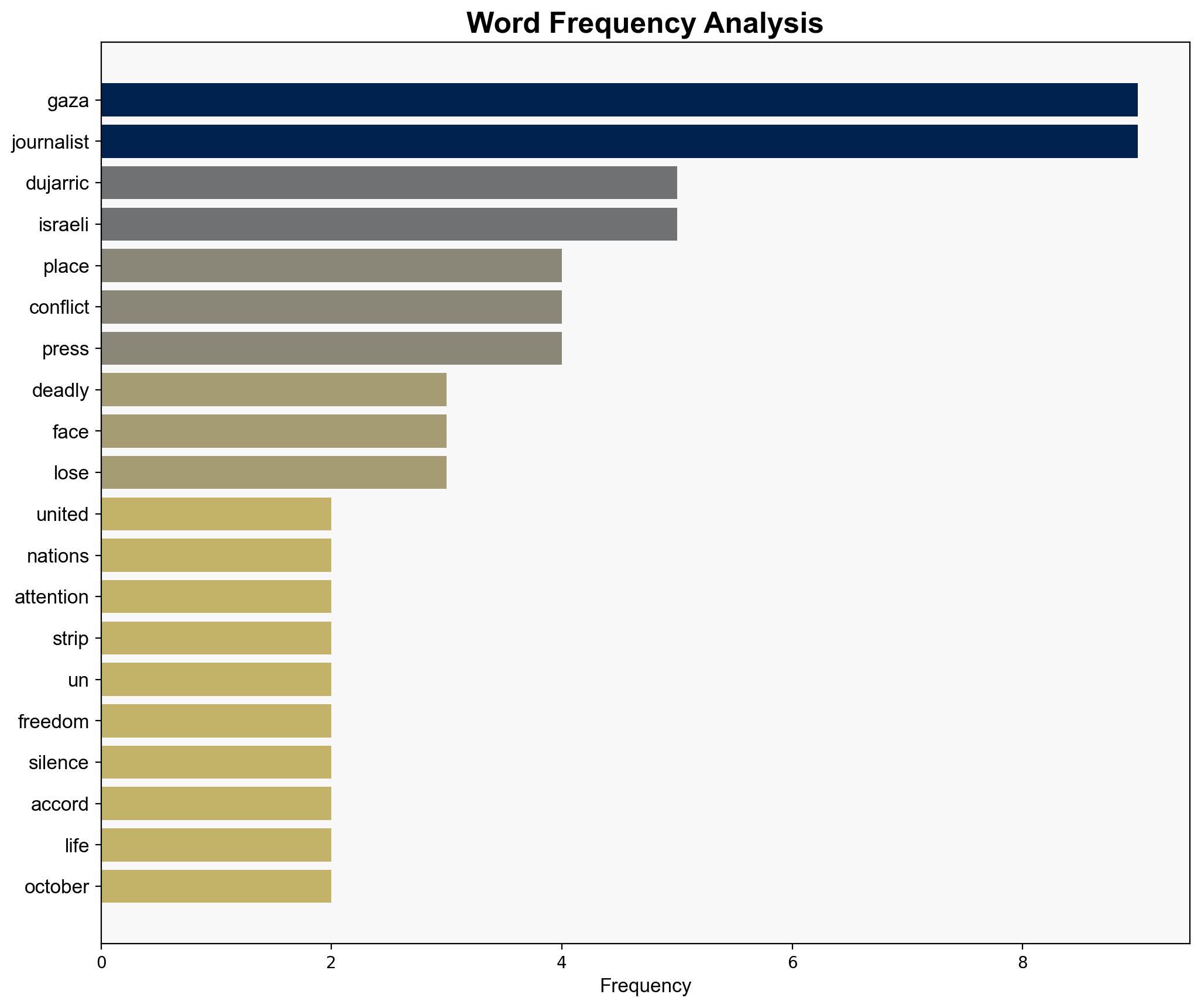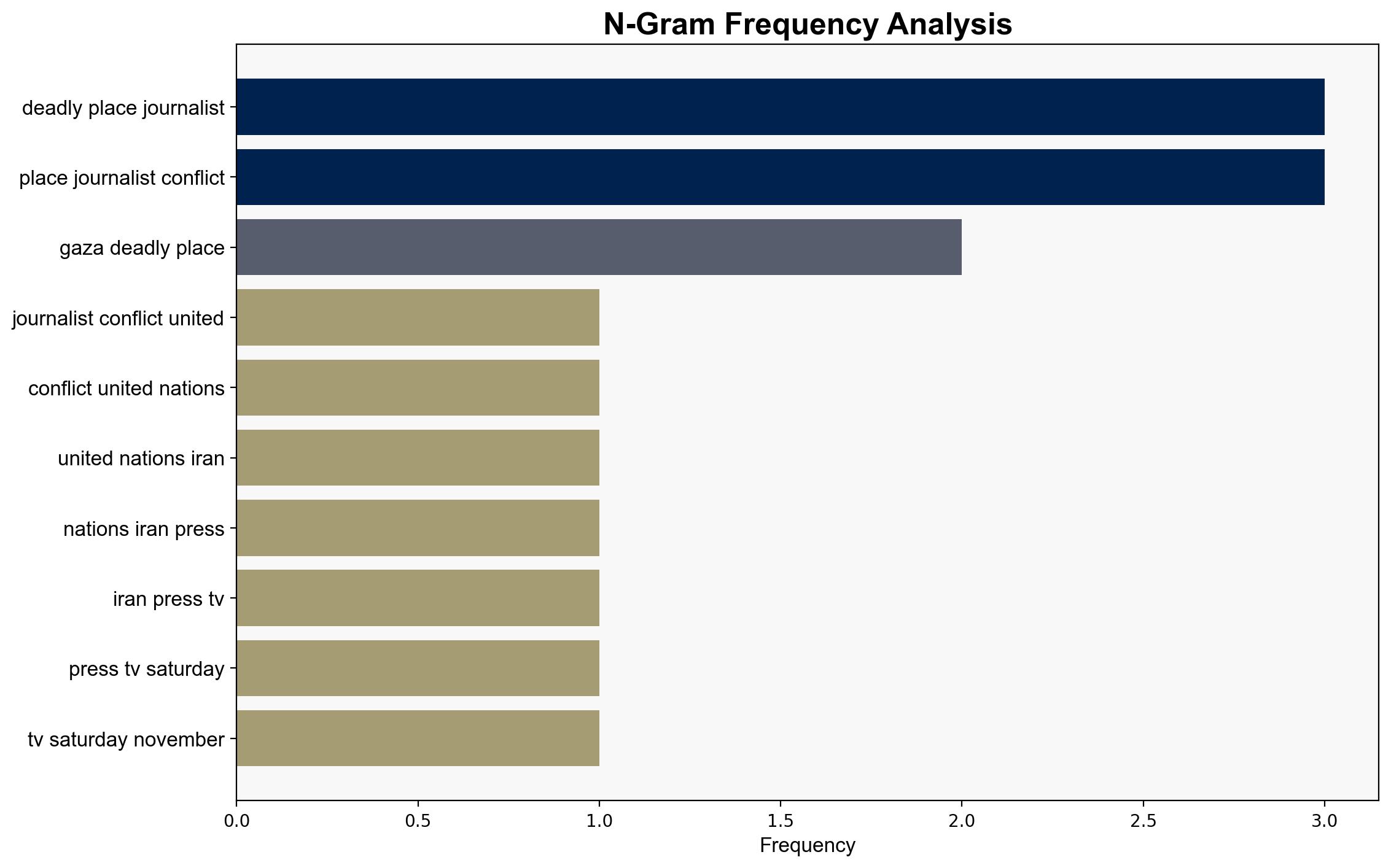Gaza has been deadliest place for journalists in any conflict says United Nations – Globalsecurity.org
Published on: 2025-11-03
Intelligence Report: Gaza has been deadliest place for journalists in any conflict says United Nations – Globalsecurity.org
1. BLUF (Bottom Line Up Front)
The most supported hypothesis suggests that the high journalist casualty rate in Gaza is primarily due to targeted actions by Israeli forces, as indicated by multiple international organizations. Confidence level: Moderate. Recommended action includes advocating for an independent investigation to ensure accountability and enhance press freedom protections.
2. Competing Hypotheses
1. **Hypothesis A**: The high number of journalist casualties in Gaza results from targeted actions by Israeli forces aiming to suppress unfavorable coverage and dissent.
2. **Hypothesis B**: The casualties are primarily collateral damage from broader military operations in a densely populated conflict zone, with no specific targeting of journalists.
Using the Analysis of Competing Hypotheses (ACH) 2.0, Hypothesis A is better supported due to consistent reports from international bodies like the UN and OIC, which highlight violations of international law and press freedom. Hypothesis B lacks substantial evidence of indiscriminate targeting without intent.
3. Key Assumptions and Red Flags
– **Assumptions**: Hypothesis A assumes intentional targeting, while Hypothesis B assumes operational collateral damage. Both rely on the accuracy of reported incidents and the neutrality of sources.
– **Red Flags**: Potential bias in reporting from involved parties, lack of independent verification of incidents, and the possibility of misinformation or propaganda.
– **Blind Spots**: Limited access to the conflict zone for independent observers and potential underreporting of incidents.
4. Implications and Strategic Risks
– **Patterns**: Continued targeting of journalists could lead to reduced media presence, impacting global awareness and humanitarian responses.
– **Cascading Threats**: Escalation of conflict could increase regional instability, affecting neighboring countries and international relations.
– **Potential Escalation**: Increased international pressure on Israel could lead to diplomatic tensions and potential sanctions.
– **Dimensions**: Geopolitical tensions may rise, impacting economic and cyber domains, with potential retaliatory actions from affected parties.
5. Recommendations and Outlook
- Advocate for an independent, impartial investigation into journalist casualties to ensure accountability and justice.
- Enhance international support for press freedom initiatives in conflict zones.
- Scenario Projections:
- **Best Case**: Successful investigations lead to accountability and improved protections for journalists.
- **Worst Case**: Continued targeting and suppression of media, leading to increased conflict and international isolation.
- **Most Likely**: Partial investigations with limited impact, maintaining current levels of risk and tension.
6. Key Individuals and Entities
– Antonio Guterres
– Stephane Dujarric
– United Nations
– Organization of Islamic Cooperation (OIC)
– Israeli military forces
7. Thematic Tags
national security threats, press freedom, international law, regional conflict, media safety




